The women’s pictures of the 1940s seemed to have been defined by mental illness. Women who could not carry on as they were, and broke psychologically, terribly unmoored in a world which seemed to provide them with little support. Often the source of these women’s mental illness was the cruelty of men, such as in both versions of Gaslight, Possessed and My Name is Julia Ross. All of theses films contained staggeringly brilliant performances by their female leads, and The Snake Pit is no different.
Based on the semi-autobiographical novel written by Mary Jane Ward’s novel of the same name, which had come out two years before the film’s release. Like the novel and film’s protagonist, Virginia, Mary Jane was born in Illinois and had suffered a breakdown after marrying. Both women are writers, an occupation that is sneered at by both men and women throughout the film.
The book was purchased from Random House by director Anatole Litvak, who, like so many directors of that era, was a Jewish exile from Germany, who had made films across Europe, starting his apprenticeship in the industry at the age of 13. His ability to speak Russian, German and French had meant he had been able to travel Europe and be exposed to many different types of film making. This ability for the different, the unexpected is clear in many of his films, such All This, And Heaven, Too, Sorry, Wrong Number and, of course, The Snake Pit.

Fox was the only studio to want to take a chance and make the film, and this was because Daryl F. Zanuck felt that after the trauma and hardships of the war, still so fresh in the minds and memories of many, that audiences would be able to understand and connect with Virginia’s character. Like them, Virginia suffers many hardships and lives in an uncertain, unmoored world, which seems to be populated by enemies rather than allies. The making of the film was no cake walk for anyone, especially not de Havilland, which I will discuss later on. Glamour was not the order of the day. No hairdressers were allowed on set, which was unusual for the time, when stars’ looks were highly and specifically cultivated, each one having their own signature look, such as Veronica Lake’s peekaboo fringe or flowing wave of Katherine Hepburn’s hair. None of the actresses were allowed to wear any undergarments, such as bras or girdles. Realism was what was required and asked for by Litvak.
de Havilland was quoted as saying:
All of us believe it will be a powerful motion picture[…] Glamourless? Well, who cares about glamour? My job is to realise fully the character drawn by the author and I do hope I won’t miss it, for The Snake Pit is too vitally important for the shallow interpretation.”
This air of earnestness, of the desire to expose the need for better care in mental hospitals throughout the country, is very clear during the film. The Jupiter Hill Mental Hospital in which Virginia is confined, is not a place that engenders hope for recovery. Wards 1 to 3 are highly impersonal and clinical, populated by nurses who seem to care little for the feelings and comforts of their patients. Two nurses snidely discuss Virginia whilst she is subjected to intense hydrotherapy that appears as torture to our heroine, who imagines ocean waves crashing over her, drowning her, pulling her into a whirlpool of madness. The head nurse in Ward 1, who Virginia accuses of being in love with Virginia’s psychiatrist, Dr Kik (played by Leo Genn), is almost unbearably cruel to Virginia. In another Ward, Virginia is chastised by a nurse for sitting on the rug, whilst another patient begin soft shooing on it and singing a blues song, exposing the inhumane treatment of and ridiculous rules imposed upon the patients.
But worst is yet to come in the form of Ward 33, which is overseen by the kind Dr Terry (played by Glenn Langan). Ward 33 is like a torture chamber from the dark ages, populated by raving women, some of whom are in straitjackets, as Virginia is when she is first brought there. It is there that Virginia realises something very important:
It was strange, here I was among all those people and, at the same time, I felt as if I was looking at them from some place far away. The whole place seemed to be a deep hole and the people down in it like strange animals.
Litvak pulls the camera back until Ward 33 looks like a crater, bricked up along the sides, with Virginia in a mass of writhing, insane bodies. She is the beacon upon which the audience concentrates, there is some hope for her in all of this chaos. But it also exposes the lack of understanding of the mentally ill, of how the system has gone beyond breaking point, it has torn like a great tendon, failing those who need it most. This is also shown in the form of Nurse Celia Sommerville, who was once the head nurse of Ward 1, but now has descended into a world of delusion, where she does not know that she is mad.
What this movie also exposes is the pressures put on women from childhood. A strong Freudian, Oedipal line of inquiry and explanation is given in the film, which is not featured in the novel. Virginia’s problems stem from childhood, where she had a loveless mother and a father who died when she was young. Ever since she has internalised terrible guilt for his death and the death of another man who was her suitor, and has also sought men who share facets with her father. Dr Kik becomes the object of her affection, too, as he also becomes a guardian and guide to her. But in the end Virginia realises that she cannot love a husband as she loved her father. Romantic love cannot replace familial affection and vice versa. At the end of the film, Virginia says she knows she is well, because she no longer believe herself in love with Dr Kik, he in turn assures her that she never really was at all.
The film has been criticised, especially by female critics for its rooting of Virginia’s problems in her own psyche, instead of using the story to expose the fact that women often suffer from mental illness due to the strictures of society. Virginia’s illness becomes full-blown after she cannot adjust to the requirements expected of her as Mrs Robert Cunningham, the role of wife and mother. Her inability to exert her own identity in a society that calls her not Virginia, but Mrs Robert Cunningham. While this criticism is valid, it must also be appreciated how the story does expose how women who have their own minds are often accused of being mad. Virginia is called difficult or uncooperative many times in the film, interestingly mostly by the female nursing staff who should, as women, perhaps be more sympathetic to their own sex. And the film does not make men look blameless. One of the head psychiatrists is male, Dr Curtis, who is woefully unable to understand Dr Kik’s methods or recognise the suffering of his female patients. And Virginia’s father is shown as being a kind, but inadequate man, who fails to curtail his wife’s loveless behaviour towards her daughter.
This film is one of the most astonishing I have seen in terms of how realistically it shows the state of the treatment of mental health. How little money and resources are expended for something that is vital for human survival: the wellness of the human mind. And I am not the only one who thinks so, as the film led to large scale reform in America in how government mental hospitals were run, exposing how excruciatingly understaffed and underfunded they were. One nurse was said to have visited the set of the film and remarked that the actresses walking around mumbling incoherently and babbling mindlessly, were just like her girls.
Now let us discuss the performance of our star, as well as her dedication to the role. From the first, Olivia was interested in the role, but she was not immediately given the role, and Ingrid Bergman, Ginger Rogers and Gene Tierney were all offered the role. I mean no disrespect to those wonderful actresses, but Olivia is perfection in this role, and her dedication to researching it and acting it out are incredible. She visited the Camarillo State Mental Hospital, which was supposed to be a one of the best of the government hospitals, and was still understaffed. As previously stated, glamour was of no concern to Olivia, who wore no make up, lost weight and completely entrenched herself in Virginia’s mental state. Louella Parsons would quote her saying,
[I was] so deeply engrossed in the character that I was afraid I might suddenly do the things off-screen, as I did on. I was exhausted…I have never had any role that took so much out of me.
Olivia’s performance is pitch perfect. She acts out every erratic, exhausting emotion that Virginia experiences with such force that it is breathtaking. But she is no less impressive in her quiet moments, when she internally tries to sort through what she is seeing and being exposed to. The voiceovers which act as a way to retain some of the first person narrative of the novel, is done incredibly well, and this is both thanks to the brilliant editing done by the wonderful Dorothy Spencer, and also the manner in which Olivia silently acts out her emotions and matches these so smoothly in the narration.
I could break down the entire film and just go on and on about how Olivia is perfect in this scene and that. But I will avoid that both not to try and lamely explain an incredible performance, and also not to bore you with something that must be seen to be appreciated. I cannot overstate how natural Olivia is as Virginia, how believable her mental anguish and torture is. I have suffered from mental health issues for much of my life, and I can completely empathise with Virginia, especially as a woman. I can honestly say that no film on the subject has made me feel as seen as this one. It does not glamourise mental illness and it does not show it as something to be pitied. Olivia makes sure that you know that Virginia needs real, concerted and careful understanding and a sounding board to find the road to recovery. Even her eyes are show her mental state in a way that is so real, they will leave such an impression on you, they really are the doors to the soul. Her incredible work was thankfully recognised through numerous awards, such as a nomination for the Best Actress Oscar, winning the New York Film Critics and Volpi Cup for Best Actress.

The supporting cast is also brilliant. Leo Genn is perfectly cast as the calm, gentle and kind Dr Kik. He and Olivia have wonderful chemistry, and I am sure I was not the only one who felt a real warmth for their character’s relationship. Whereas Olivia runs the gauntlet of emotions, Genn is always steady, with his beautiful mellifluous English accent.

Mark Stevens is the epitome of sweetness, empathy and patience as Virginia’s husband, Robert. Stevens embodies a role that could have easily been extremely bland and disinteresting in a way that makes sure that the audience empathises with him almost as much as Virginia. They are both suffering, but in different ways, and when they come together at the end, it is quite lovely.
The rest of the supporting cast from Celeste Holm, Beulah Bondi, Ruth Donnelly and Betsy Blair, to Helen Craig and Glenn Langan, are all wonderful. Although they are not, understandably, given the scope of character and screen time that Olivia and Genn are, they are no less vital to the overall film, serving difference purposes in Virginia’s journey.

Finally, I will say that I cannot recommend this film enough. Since I was a child my favourite role of Olivia’s was Melly in Gone with the Wind, as the character is so loveable and also reminds me of my lovely, late grandmother. But now that I have seen The Snake Pit, her performance in the film is right up there, and it has reinforced my believe that she is one of the greatest performers of this or any era.
Sources
Hallam, Lindsay. The Snake Pit. 2019
The Making of the Snake Pit.
Both of the above essays are from the special edition booklet that accompanies Indicator release of The Snake Pit.
This is my contribution for The Fourth Annual Olivia de Havilland Blogathon being hosted by the ever creative In The Good Old Days of Classic Hollywood. Please visit her blog to read everyone other’s wonderful tributes.


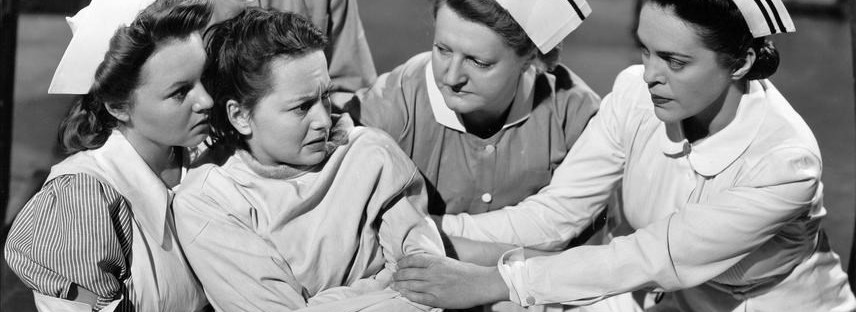





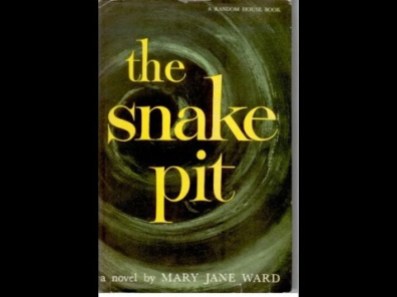








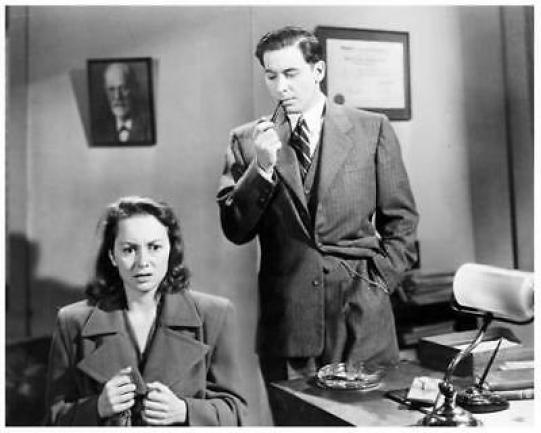

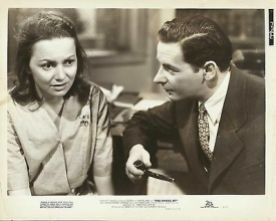









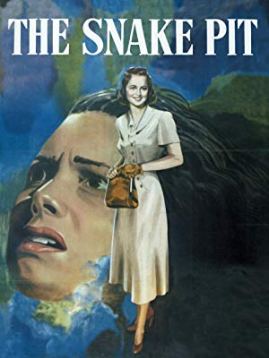

This is a wonderful article! You provided such accurate, detailed information. I really enjoyed reading this. I have yet to see this film, but it sounds exquisite. I have heard a lot about it, and I am curious to watch it. I am very impressed by the things Olivia de Havilland did to enact the role realistically. That is real dedication. You’re a very good writer!
By the way, I would like to invite you to join our month-long celebration of Code films, #CleanMovieMonth85 (https://pureentertainmentpreservationsociety.wordpress.com/2019/06/07/announcing-cleanmoviemonth85/)! Throughout July, we are going to watch nothing but American Breen Era films, and we are inviting participants to do the same. Writers can join this celebration with articles about their own favorite films and discoveries during the month, and we will republish them on our website. As a special high-point of this celebration, we are hosting a blogathon on the first weekend in July in honor of the formation of the PCA and the twenty wonderful years of decent cinema which followed during Joseph Breen’s tenure. It will be called The Favorite Code Film Blogathon (https://pureentertainmentpreservationsociety.wordpress.com/2019/06/07/announcing-the-favorite-code-film-blogathon/). On July 5-7, participants will choose their single favorite Code films and write about why these movies from the era of film decency were so good. We would love to have your participation. We could really use your talent!
Yours Hopefully,
Tiffany Brannan
LikeLiked by 1 person
Thanks so much, Tiffany! I’m so glad you enjoyed it! That sounds really interesting! I will definitely let you know! 😊
LikeLiked by 1 person
I look forward to hearing your decision. Thank you for the follow, by the way!
Yours Hopefully,
Tiffany Brannan
LikeLiked by 1 person
Hi Tiffany! May I please write about Young Dr Kildare (1938)? I won’t be able to watch Code films every day unfortunately, but I’ll try to watch a few of the ones you list!
LikeLiked by 1 person
That sounds wonderful! Thank you so much for joining! That’s one of my favorite films. I adore Lew Ayres. As for #CleanMovieMonth85, please watch just as many Code films as you want! If you publish your thoughts on them and include links to PEPS, I will republish them!
Yours Hopefully,
Tiffany Brannan
LikeLiked by 1 person
It’s a pleasure! I’m really looking forward to writing about it. Perfect! Thanks so much!
LikeLiked by 1 person
This film is so good, and your review did it justice. As much as I don’t like the Oedipal explanation, I see the importance of the other criticisms the film makes, like the nurses and doctors who lack empathy. It’s good when a film can help change the world a bit, isn’t it?
Kisses!
Le
LikeLike